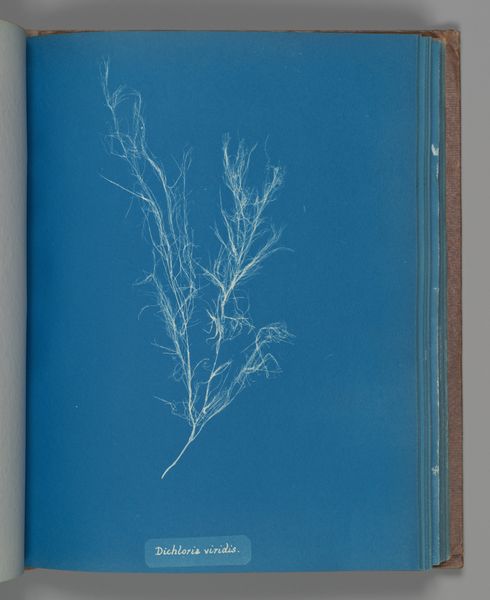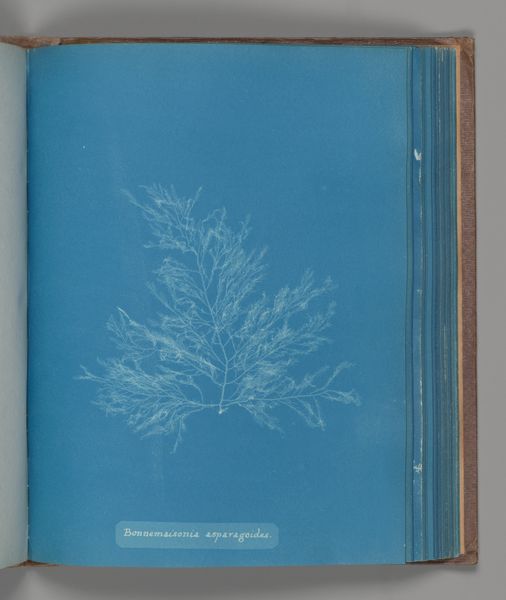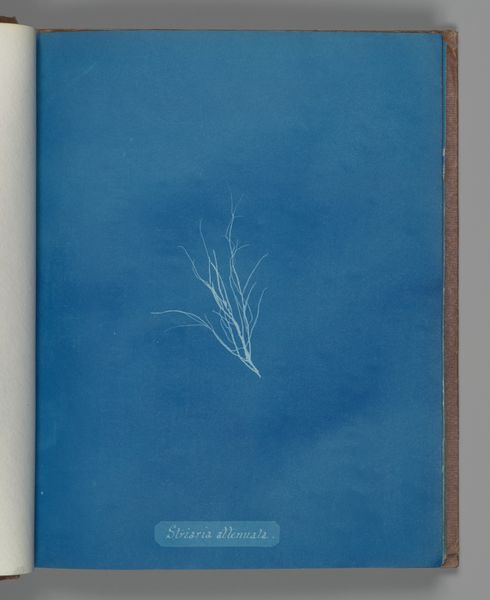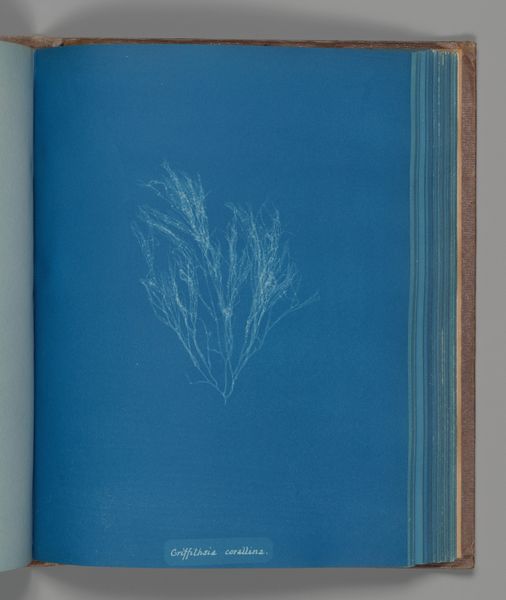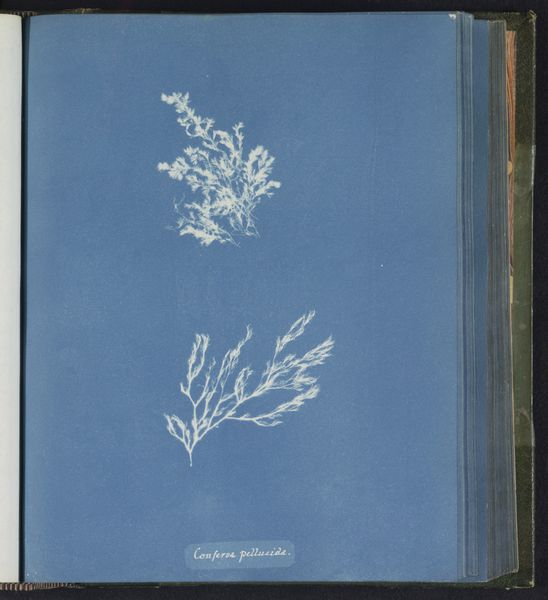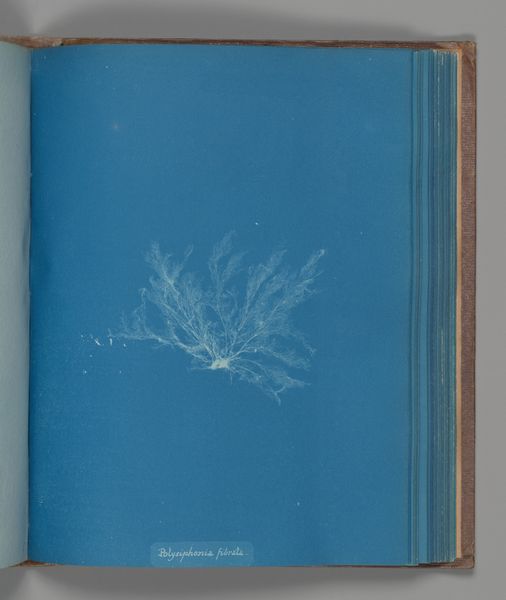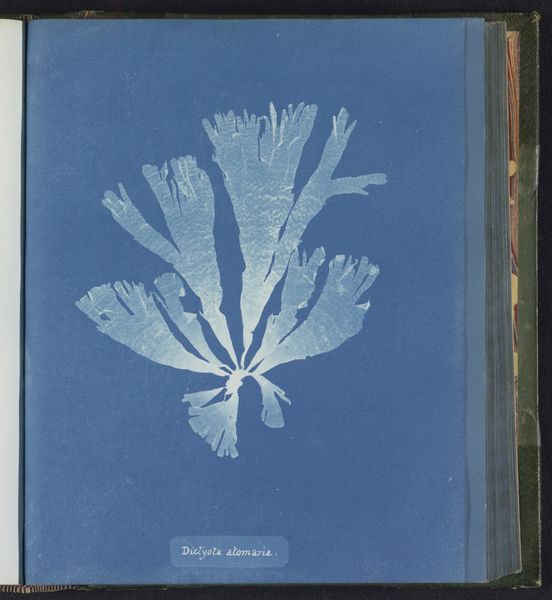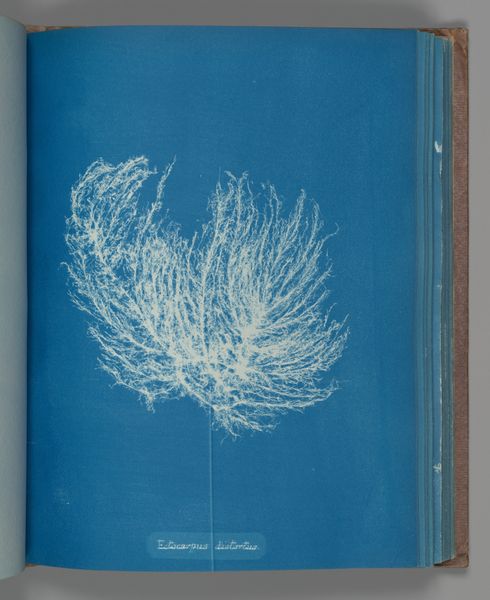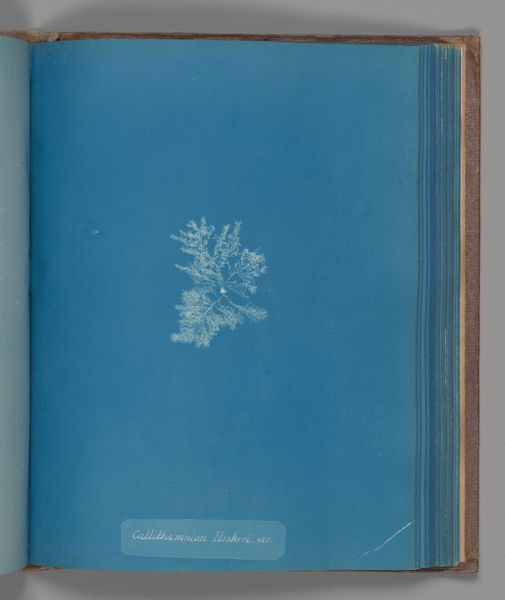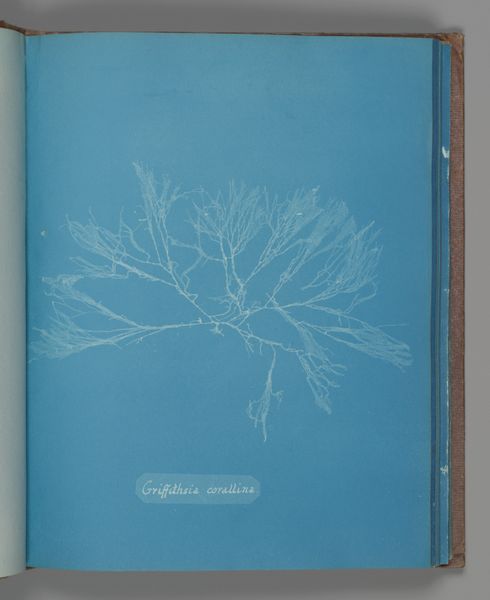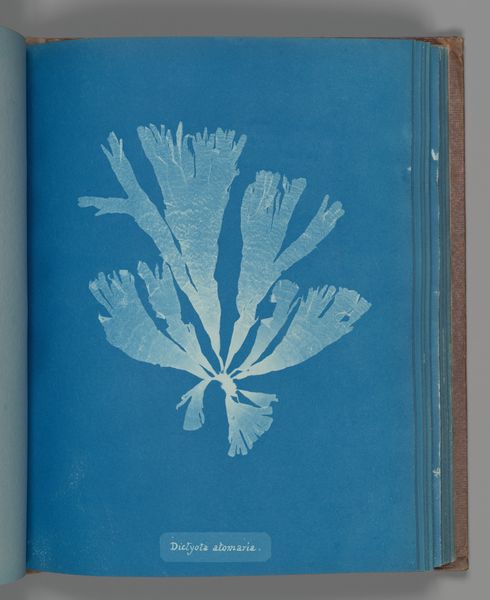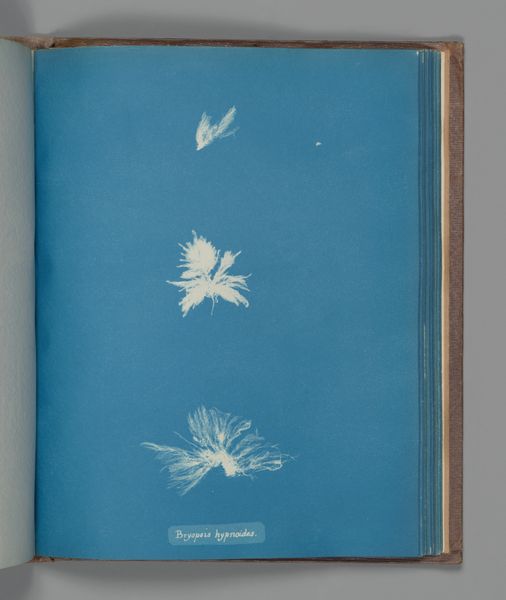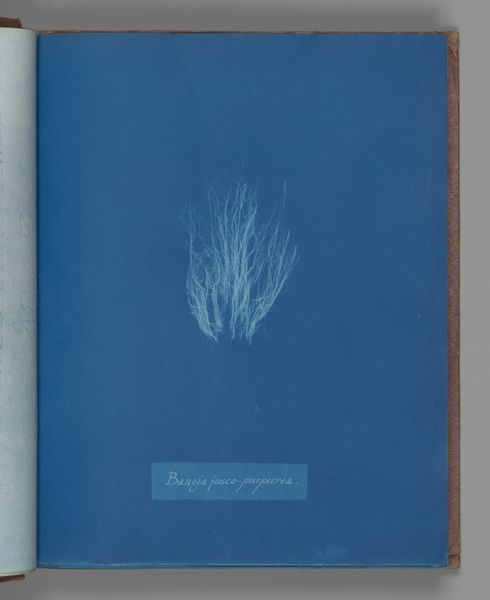
print, cyanotype, photography
# print
#
cyanotype
#
photography
#
realism
Dimensions: Image: 25.3 x 20 cm (9 15/16 x 7 7/8 in.)
Copyright: Public Domain
Curator: At first glance, it evokes something both ethereal and deeply scientific. The stark white silhouette against that intense blue is quite striking. Editor: Indeed. What we’re observing is Anna Atkins' "Dictyota atomaria," a cyanotype from somewhere between 1851 and 1855. It’s currently housed at the Metropolitan Museum of Art. The piece exemplifies the convergence of art and science during that period, showcasing one of the earliest applications of photographic printing techniques. Curator: Right. You can almost feel the hand of the artisan, the alchemist, the way she coaxed an image using sunlight, chemicals, and carefully pressed algae. The labor-intensive nature of early photography surely influenced our current fascination with photographic practices today. Editor: Precisely. The fact that this work is both a scientific record and a work of art underscores how fluid the boundaries of disciplines were in the mid-19th century. Museums were still defining themselves, shaping public knowledge and appreciation, and influencing art reception as a cultural force. This piece invites us to rethink traditional separations. Curator: It makes you wonder about the social dynamics present too. The acquisition, how this specific plant ended up in a composition... Who owned it? Who consumed it? These little questions speak to grand issues surrounding natural resources. Editor: Yes! Atkins' work also pushes the role of women in science. Producing these cyanotypes was not simply a pastime. It reflects women gaining ground into technical processes during an epoch dominated by patriarchal scientific societies and museums. It brings her agency to the forefront. Curator: I am struck by its immediacy despite its age. You realize its modern edge is something quite special within the history of image making. Editor: Agreed. Beyond its aesthetics, it serves as an artifact that helps trace the lineage of art, scientific documentation, and societal values embedded in visual culture.
Comments
No comments
Be the first to comment and join the conversation on the ultimate creative platform.
